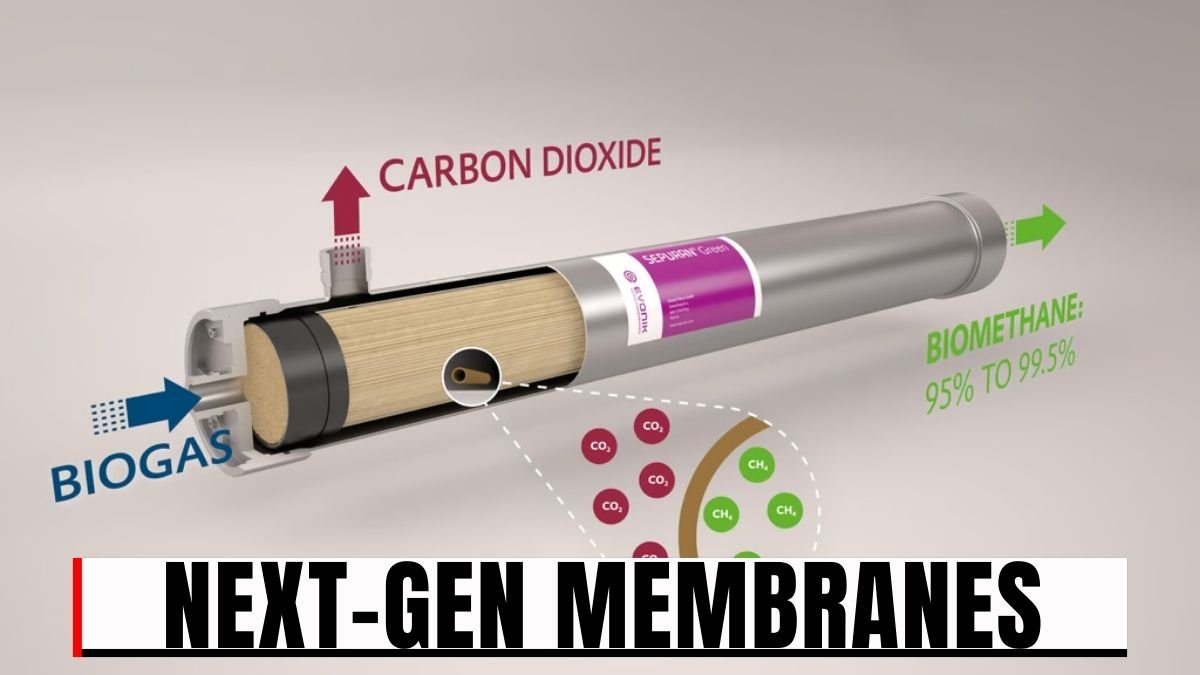Next-Gen Membranes: Conventional membranes often face some serious limitations in the gas separation process. These include the balance between permeability and selectivity, physical aging, and costly maintenance. In such a situation, the next generation of smart and self-healing membranes have raised new hopes in this field. These “intelligent” membranes are sensitive to external stimuli such as heat, light or gas and automatically change their properties, ensuring highly efficient and precise gas separation.
Smart technology and gas separation advances
The most important feature of smart membranes is that they can change their structure and surface properties according to conditions. Researchers are developing membranes that contain stimulus-responsive materials. For example, membranes containing metal-organic frameworks (MOFs) or special polymers open molecular gates when a gas such as CO2 is introduced, allowing highly selective gas transport. This process is more controlled and efficient than conventional systems.
Gas-triggered switching technology makes smart membranes responsive to different gases. CO2-responsive membranes contain tertiary amines, which form carbamate salts when exposed to 𝐶𝑂2 CO2. This response causes the polymer structure and pore size to change, allowing gas flow to be controlled.
Role of Adaptive and Multi-Responsive Systems
It is now possible to have modern smart membranes that respond to several forms of stimuli simultaneously. An illustrative case is that a dual-responsive membrane can be made of a polymer that contracts on high temperatures and expands at a given pH concentration. This does not only make the separation more accurate but also gives antifouling effects on the membrane surface.
In some advanced membranes, control by electric fields is also possible. The size of the molecular channel can be varied by varying the intensity of the electric field in fluid-filled carbon nanotube membranes. This enables separation of multi-component gas mixtures in a staged fashion, which is highly convenient in industry.
Innovations in AI and Materials Science
Creating novel and advanced membranes has long been a time- and resource-intensive activity. This challenge is being surmounted by using machine learning. Machine learning forecasts the behavior of novel polymers and composite based on prior experimental and computational measurements. The technology enables researchers to be innovative so that efficiency and durability of the innovation are maximized.
Self-healing technology and its benefits
The main purpose of self-healing membranes is to increase their life span and reduce maintenance costs. Damages such as cracks or pinholes in the membrane severely affect their performance. Self-healing technology gives the membrane the ability to repair itself automatically.
There are membranes that employ non-covalent dynamic bonds. Hydrogen bonds or 3 pipe- pi bonds rearrange the damaged membrane and close it. In vacuum-assisted method, the edges of the tear are pulled open to reopen hydrogen bonds which reinstill the integrity and separation capability of the membrane.
In thermal-triggered repair technology, a reversible chemical reaction between the polymer network is induced by heating which then repairs the damaged structure and rebuilds it when it cools down. It has been demonstrated that certain self-healing copolymer membranes are able to completely regain their gas separation capabilities following mechanical damage, which conventional commercial membranes lack.
Future prospects
Smart and self-healing membrane technology is not yet fully developed. There are a lot of challenges that should be resolved before it is adopted on a large scale. The most crucial of these challenges is the question of cost and scalability. The multidimensional materials and production methods that are adopted in the next-generation membranes must become economically viable to mass-manufacture the same.
Moreover, the response of the membrane to stimuli must be enhanced regarding the speed and stability as well. Researchers will engineer AI and machine learning to create highly efficient, durable and multi-responsive membranes in the future. These will also encompass the highly developed composite technologies like Mixed Matrix Membranes.
Smart and self-healing membranes have the potential to revolutionise the world of gas separation in the coming years. They will not only increase efficiency but also reduce environmental impact and production costs.
